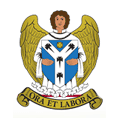Primary and Secondary Schools in The United Kingdom

Adcote School for Girls
Shrewsbury, The United Kingdom
Adcote School is an independent school for girls, based in the village of Little Ness, which is located 8km away from Shrewsbury, Shropshire, England. The school was established in 1907, and it is a registered charity. Adcote School is organized into a nursery, a Junior School, and a Senior School. The nursery accepts girls aged 2 to 5, the Junior – girls aged from 5 to 11, and the Senior school – girls aged 11 to 18. Ascote School follows the National Curriculum, teaching subjects like English, Mathematics, Science, Geography, History, Religious Education, Music, Art, PE, Design... See full description.

Ashbourne College
London, The United Kingdom
Ashbourne College is an independent sixth form college based in Kensington, London. The school was established in 1981 and focuses on delivering pre-university education, including GCSE and A levels. The institution’s main strength is considered to be its small size and the friendly, family-like atmosphere it strives to create for the students. Tutors pay personal attention to each and every learner, adopting a positive and encouraging approach to teaching. On top of the A level and GCSE programs available at the school, Easter courses are offered, too. These are at both GCSE and A... See full description.

Dartford Grammar School
Dartford, The United Kingdom
Dartford Grammar School residing in Dartford, Kent, England was founded in 1576 as a secondary school for boys. The school also holds language institute status and the IB program. The students are divided into five units: D’Aeth (Yellow), Gwyn (Purple), Havelock (Red), Vaughan (Green) and Wilson (Blue). Another interesting fact is that the school has a unique color system according to the achievement of students. A badge with a crest represents excellence in rugby, swimming, cricket or athletics, purple denotes success in performing arts, tour ties to be acquainted with foreign sports... See full description.

Greenfields School Short and Long term EFL
Forest Row, The United Kingdom
Greenfields independent Day and Boarding school offers all year round EFL opportunities for children aged 11 to 18 including Summer and Easter holidays. Students can simply improve English or stay until they are fluent and then join the school if desired. Lessons are complemented with outings and many other activities all in the heart of the English country side yet close to London and the coast and only 20 minutes from London’s Gatwick airport. Room for up to 50 boarders, common rooms, kitchen, sports facilities, TV, gaming room, nearby shops, swimming pool, horse riding, cycling etc.... See full description.

Marymount International School London
Kingston upon Thames, The United Kingdom
Marymount International School London is a small, independent Catholic day and boarding school for girls aged 11 to 18, fully committed to the academic, emotional, spiritual, and social development of its students.
Established in 1955 by the Religious of the Sacred Heart of Mary (RSHM), to meet the needs of families in the international business and diplomatic community, the school embraces and embodies the RSHM Mission “that all may have life”. Marymount welcomes girls of all nationalities and religious traditions, providing a unique environment of cultural exchange and... See full description.

St Edward's School Reading
Reading
St. Edward's is an independent school for boys who are ages 4-13. We work to enrich and develop the entire child, intellectually, morally, spiritually, socially and physically. We have an excellent education and a reputation for success.
Primary and Secondary Schools in The United Kingdom by City:
CastletownColwyn BayDartfordForest RowKingston upon ThamesLondonPerthReadingShrewsburySomersetSouthamptonWinscombeYorkAbout Primary and Secondary Schools in The United Kingdom
The countries of Northern Ireland, England, Wales, Scotland and smaller British Isles are collectively known as the United Kingdom. Primary and secondary education in United Kingdom comes under the purview of the Ministries of Education of the respective member countries. Primary and secondary education in United Kingdom is, mostly, similarly structured across the member countries with some variable features.
Primary and secondary education in United Kingdom is compulsory and targets children in the age group of five years to sixteen years. Northern Ireland, however, has primary schools admitting students from the age of four years. Primary and secondary education in United Kingdom is provided free of charge at publicly funded schools.
All primary and secondary schools in United Kingdom teach in English although Scotland has certain schools in Gaelic areas that also teach in Gaelic. The primary and secondary schools in United Kingdom work for five days a week and are open for 190 full days or 380 half days in a year. The typical year begins in late August or early September and ends in late July. Curriculum in primary and secondary schools, in United Kingdom, is designed to be balanced and broad based. The main aim is to keep literacy, numeracy, health and well-being as the core of primary and secondary education in United Kingdom.
Primary Education in United Kingdom
Primary education in United Kingdom is the first stage of compulsory education and begins at the age of five in all member countries except Northern Ireland, which has primary education starting at the age of four. Admission to primary education in United Kingdom is driven only by age and children are to be enrolled as soon as they reach the stipulated age. Typically, children are enrolled into neighbourhood schools but parents, nowadays, also have the option of mentioning a preferred’ primary school in United Kingdom. Their child will be admitted to the preferred school if space so allows.
Primary education in United Kingdom is divided into two stages; Key Stage 1 which deals with children aged five to seven years, and Key Stage 2, which deals with age group seven to eleven years. Curriculum subjects in these two key stages include English, Mathematics, Science & Technology, Social Studies, Art, Music and Physical Education. Typically progress of students is assessed by their teachers, but may also require certain set tests to be passed.
Secondary Education in United Kingdom
Secondary education in United Kingdom is the second stage of compulsory education and is further divided into two key stages; Key Stage 3 deals with students aged eleven to fourteen and Key Stage 4 for students aged fourteen to sixteen. Key stage 3 curriculum is a continuation of key stages one and two along with a compulsory course in a foreign language. Students successfully completing secondary education in United Kingdom receive the General Certificate of Secondary Education or GCSE.
Upon completion of secondary education in United Kingdom, students in Wales, England and Northern Ireland apply for a two year senior secondary program, which leads to the General Certificate of Education at Advanced level or GCE-A. Senior secondary education in the United Kingdom is highly flexible, thereby allowing students to select the subjects they wish to pursue and be examined in. At least three GCE-A levels are required to apply to universities in United Kingdom.
Primary and secondary education in United Kingdom is compulsory and targets children in the age group of five years to sixteen years. Northern Ireland, however, has primary schools admitting students from the age of four years. Primary and secondary education in United Kingdom is provided free of charge at publicly funded schools.
All primary and secondary schools in United Kingdom teach in English although Scotland has certain schools in Gaelic areas that also teach in Gaelic. The primary and secondary schools in United Kingdom work for five days a week and are open for 190 full days or 380 half days in a year. The typical year begins in late August or early September and ends in late July. Curriculum in primary and secondary schools, in United Kingdom, is designed to be balanced and broad based. The main aim is to keep literacy, numeracy, health and well-being as the core of primary and secondary education in United Kingdom.
Primary Education in United Kingdom
Primary education in United Kingdom is the first stage of compulsory education and begins at the age of five in all member countries except Northern Ireland, which has primary education starting at the age of four. Admission to primary education in United Kingdom is driven only by age and children are to be enrolled as soon as they reach the stipulated age. Typically, children are enrolled into neighbourhood schools but parents, nowadays, also have the option of mentioning a preferred’ primary school in United Kingdom. Their child will be admitted to the preferred school if space so allows.
Primary education in United Kingdom is divided into two stages; Key Stage 1 which deals with children aged five to seven years, and Key Stage 2, which deals with age group seven to eleven years. Curriculum subjects in these two key stages include English, Mathematics, Science & Technology, Social Studies, Art, Music and Physical Education. Typically progress of students is assessed by their teachers, but may also require certain set tests to be passed.
Secondary Education in United Kingdom
Secondary education in United Kingdom is the second stage of compulsory education and is further divided into two key stages; Key Stage 3 deals with students aged eleven to fourteen and Key Stage 4 for students aged fourteen to sixteen. Key stage 3 curriculum is a continuation of key stages one and two along with a compulsory course in a foreign language. Students successfully completing secondary education in United Kingdom receive the General Certificate of Secondary Education or GCSE.
Upon completion of secondary education in United Kingdom, students in Wales, England and Northern Ireland apply for a two year senior secondary program, which leads to the General Certificate of Education at Advanced level or GCE-A. Senior secondary education in the United Kingdom is highly flexible, thereby allowing students to select the subjects they wish to pursue and be examined in. At least three GCE-A levels are required to apply to universities in United Kingdom.

